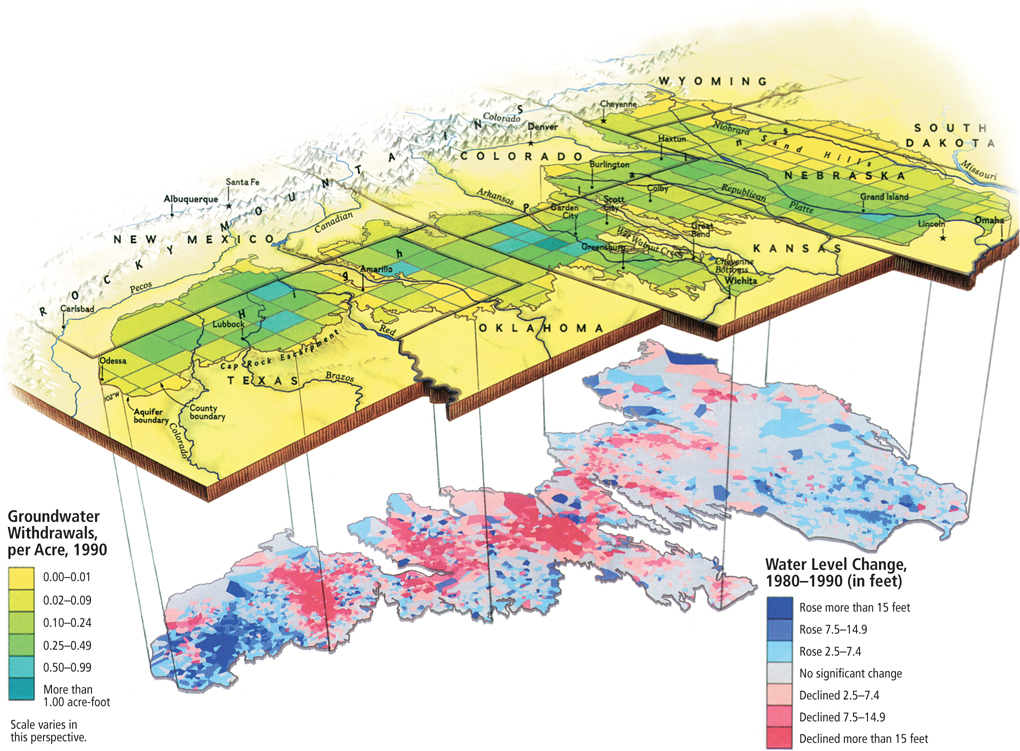
Figure 2.7: The Ogallala aquifer. Between the 1940s and the 1980s, the aquifer lost an average of 10 feet (3 meters) of water overall, and more than 100 feet (30 meters) of water in some parts of Texas. During the 1980s, though, there was a period of abundant rain and snow, which meant that water levels in the aquifer did not decline as much. However, in the Ogallala area, the climate fluctuates from moderately moist to very dry, and the dry periods are lengthening. A drought began in mid- 1992 and has returned every few years, causing large agribusiness firms to pump Ogallala water to supplement scarce precipitation. Since 1992, water levels in the aquifer declined an average of 1.35 feet per year and now exceed replenishment rates many times over.
[Sources consulted: National Geographic (March 1993): 84– 85, with supplemental information from High Plains Underground Water Conservation District 1, Lubbock, Texas, at http://www.hpwd.com; Erin O’Brian, Biological and Agricultural Engineering, National Science Foundation Research Experience for Undergraduates, Kansas State University, 2001]